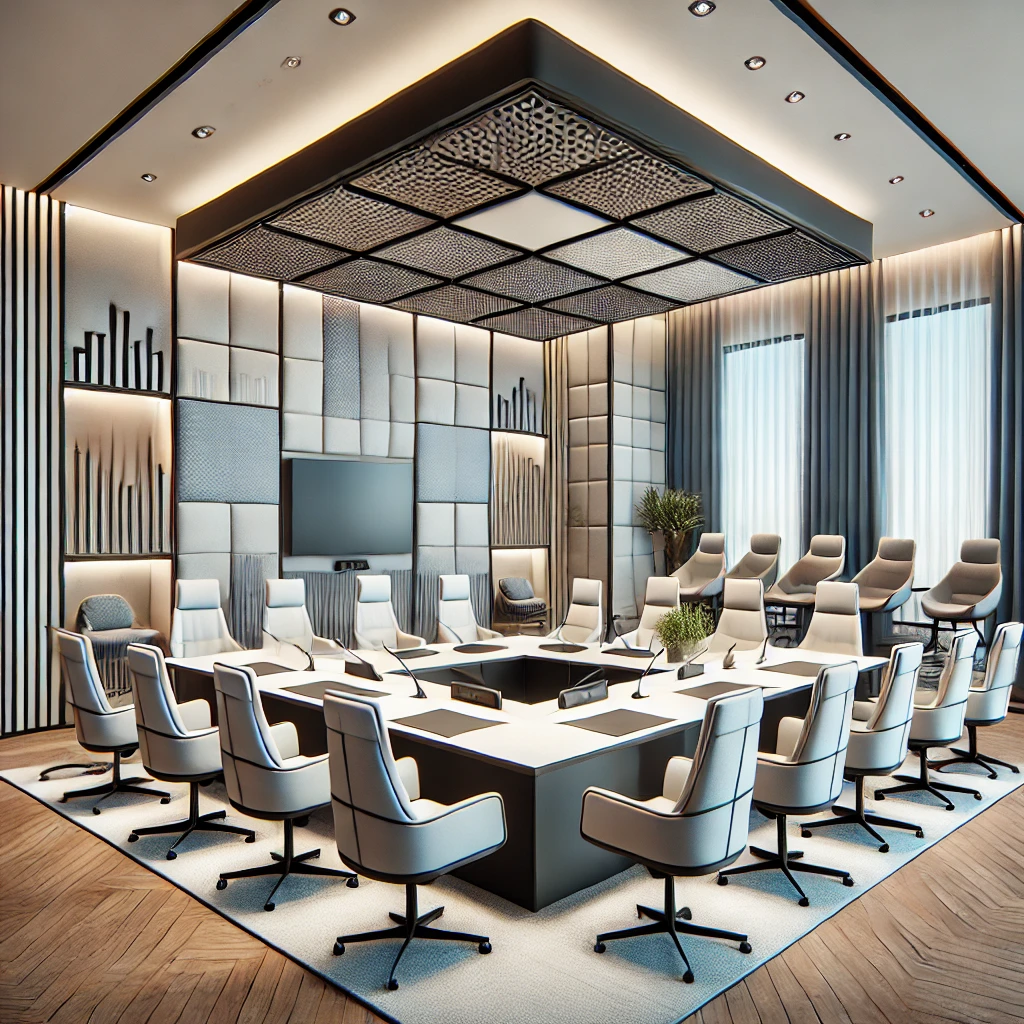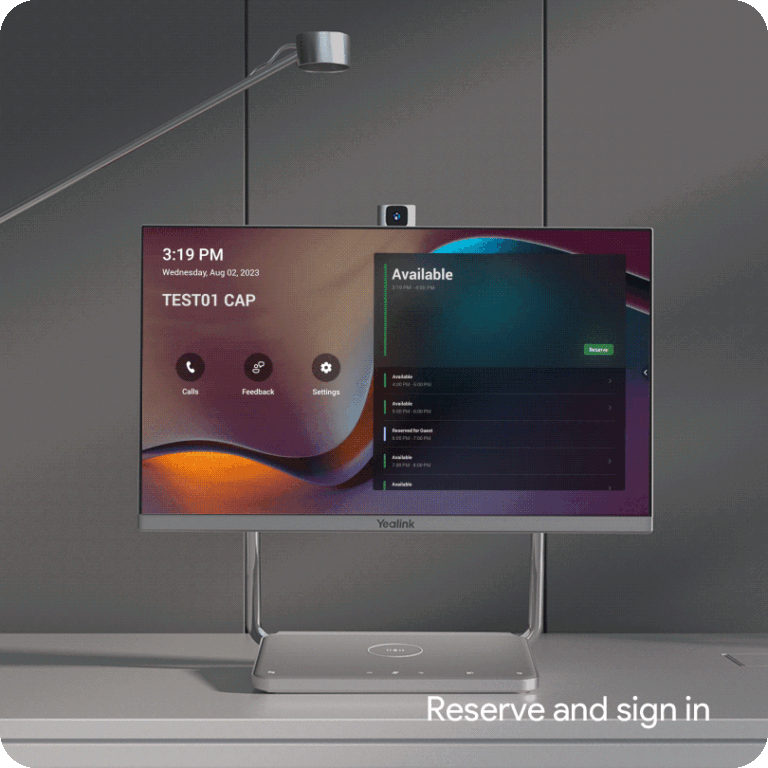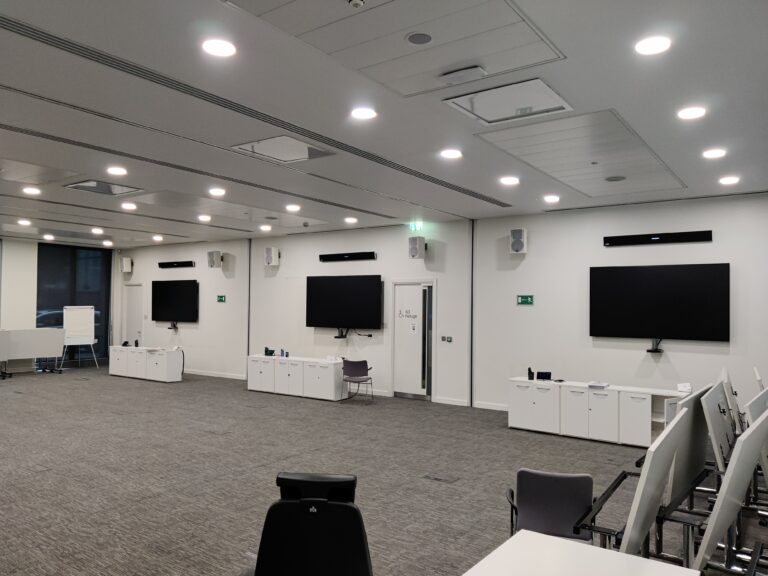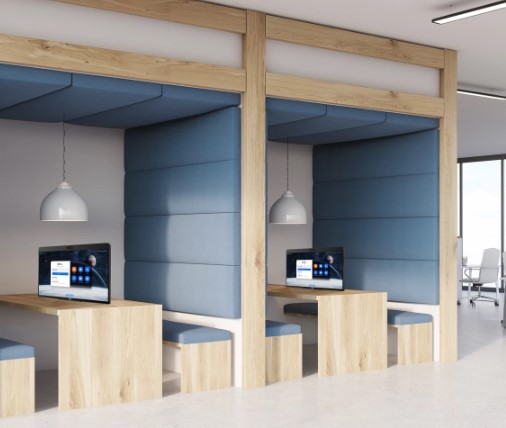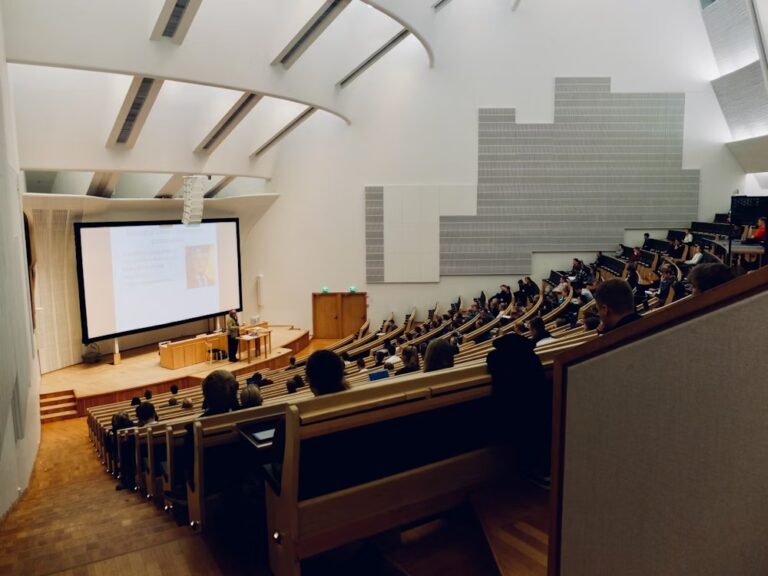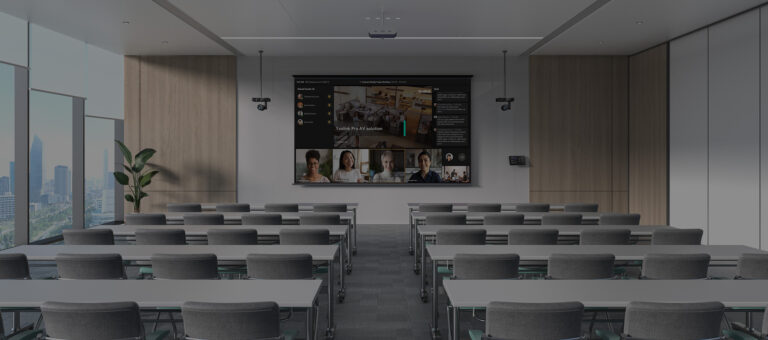As our name suggests, VideoCentric is focussed on video communications. So why are we concerned about audio in business meeting rooms, classrooms and lecture theatres? Because audio is the single most important aspect of any video conference. Always has been, always will be. This is what most people get wrong when they are unrealistic about their budget. Trying to shoehorn a low cost system into challenging room. Even if the video image is a little jittery or the presentation content takes slightly longer to arrive. Those visual artifacts can be ignored to some extent, but continuation and clarity of voices is paramount.
This article deals with the subject of Room Acoustics. Some confuse this with echo cancellation, noise reduction, sound masking and microphone mismatch. What we are really talking about is resonance. The loudness of the room or the “empty bathroom syndrome”. Where the room’s dimensions, poor choice of floor, wall and ceiling surface materials. This causes the sound to be reflected before it hits the microphone/s to be transmitted via the conference. Yes, choosing the right microphones and positioning them properly is also important. Something we separately advise upon, but what we are going to focus on now. Is determining how a room’s acoustics actually perform and what treatment is recommended if it falls short.
No one size fits all. Each room will have its own acoustic characteristics and needs to be tested individually. Recommended coverings for one room may differ greatly from an adjacent room, but of course we will recommend matching materials where possible.
10 steps to optimise your room acoustics:
- Define room dimensions
- Perform Acoustic Survey
- Understand existing surface materials
- Hear existing audio performance before optimisation
- Consider room aesthetics
- Choose preferred new surface materials
- Hear mock-up of audio performance after proposed optimisation
- Select most suitable Teams, Zoom, Webex or GoogleMeet system to work with improved acoustics
- Order and install Acoustic Treatment
- Order and install suitable Video Conferencing system
Its not just the length and width of a room that is important. The height is also critically important. Not just the visible height which has a huge impact on resonance and therefore the room acoustics, but also, the invisible height as well. What we’re talking about here is the space inside the ceiling void, particularly important if ceiling speakers are preferred as the sound from one room will find it easier to travel to the adjacent room. Although this is less to do with acoustic treatment, it certainly forms part of our acoustic planning as we may need to introduce sound masking as well as new or enhanced surface materials.
Surfaces to be treated often focus only on walls, but floors and ceilings need consideration too. Our on-site survey will take all of these into account and make recommendations based on “before and after” acoustic measurements. Seeing and hearing the difference will help you convince your organisation’s decision makers of the need to get this right.
Acoustic panels differ in size, shape, functionality and aesthetic design. Some can resemble beautiful sculptures or illuminated maps of the world, some create a designer room feel whereas others are simply low-budget stick-on foam panels. All will have acoustic benefits, but some will require a specific re-design of your room with a significant budget to go with it. Through partnerships with VRASQA’s European and worldwide suppliers we can not only assess your existing acoustical environment but also complete your room planning, consider systems with built-in noise reduction and unwanted sound elimination and see your project through to installation and completion.
What is the difference between a Business Meeting Room, School Classroom and University Lecture Theatre?
Over the last 5-10 years, the trend of modern office design is for open ceilings, air-conditioning pipework on display, glass walls, solid floors, wireless presentations, wireless BYOD and omission of textiles in terms of carpets, blinds, floor tiles and chairs. Designers seem to have focused on looks rather than practical meeting room usage.
Once the client moves into their newly designed showpiece of an office, they realise it isn’t really fit for purpose in terms of video or audio conferencing and consequently no one really wants to use the room or those that do get fatigued by its poor acoustical performance. It is often considered “too late to change it now” or “we’ve already spend the budget and can’t go back for more”.
Classrooms have always been noisy environments, typically with high ceilings, hard furnishings and lack of textile coverings. New professional audio solutions for Teams and Zoom allow for teacher zoning, automated hands-free camera and microphone switching and excellent echo cancellation performance and the need for acoustic treatment is considerably less owing to the higher number of conferencing participants (teacher + pupils). However, in focused distance learning sessions from the classroom, the teacher may be using the same facilities to connect with remote students and the acoustic characteristics of the transmission room are massively varied.
University Lecture Theatres, Seminar Halls, Hotel Conference Suites and Auditoria usually have different audio characteristics that either of the above two categories. More likely to have soft foam-filled chairs, carpets and existing sound deadening materials, the challenge is not so much from the resonance in the room, but the reach of microphone pickup and the increased volume of received sound due to more professional sound mixing and amplification.
VideoCentric’s new “Pro AV” audio solutions from Yealink, Biamp and Nureva assist in such environments but which one is most suitable will only emerge as part of a professional survey that we will conduct. Not only for echo cancellation performance during Teams or Zoom conferences, but also for sound re-inforcement outside a VC call where the presenter at the lectern requires strategically placed ceiling microphones, hand-held mics to pass around the audience or lapel lavallier type microphones to pace around with during his/her presentation.
CONCLUSIONS
One size does not fit all. Every room is different
The Importance of audio excellence and acoustical performance during conferences, lectures and remote teaching must not be under-estimated
This is not stuff you can buy off an online website
Resonance, echo cancellation, noise cancelling and sound masking are all different things, but may be linked.
An expert survey is the place to start
Phone or email VideoCentric to start your acoustic improvement journey

